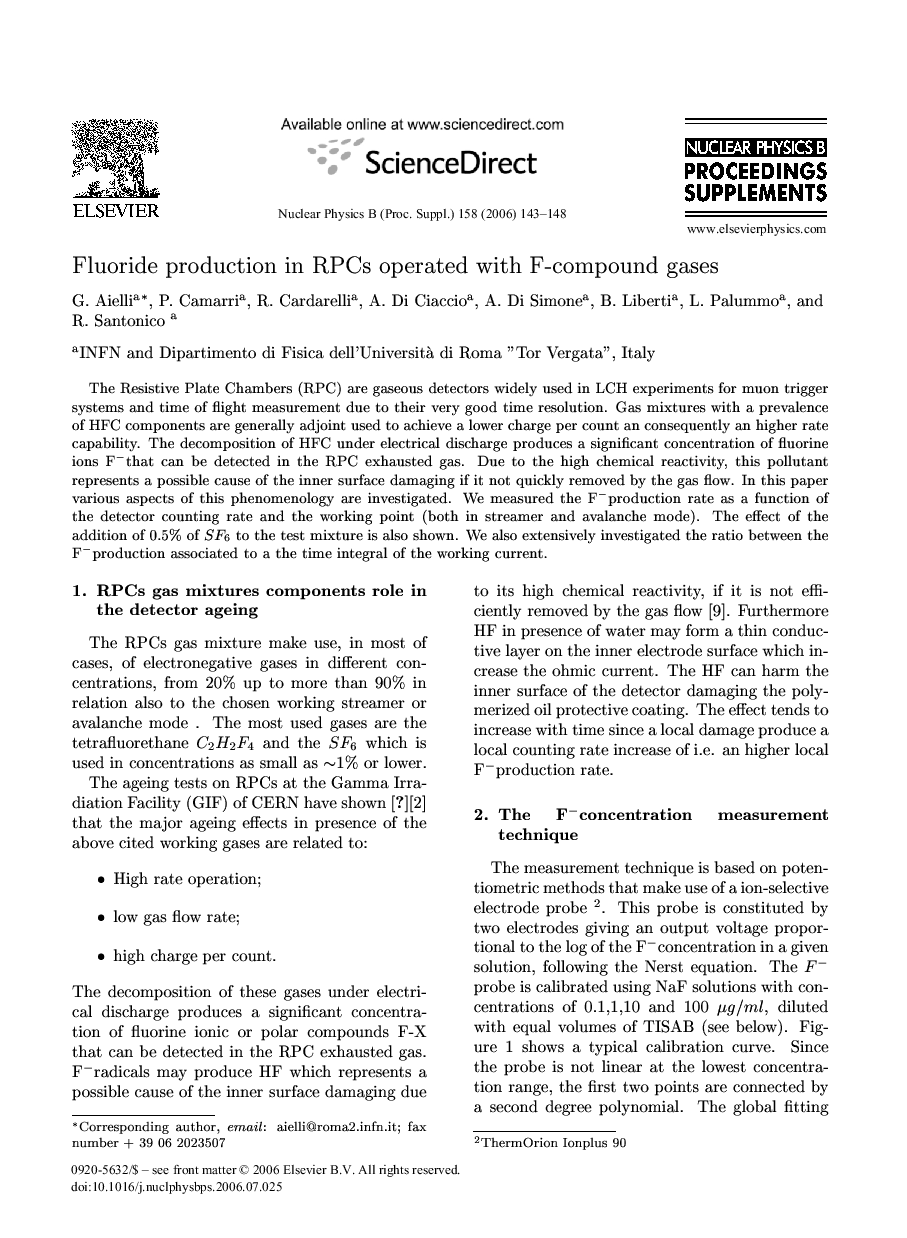| Article ID | Journal | Published Year | Pages | File Type |
|---|---|---|---|---|
| 1849942 | Nuclear Physics B - Proceedings Supplements | 2006 | 6 Pages |
The Resistive Plate Chambers (RPC) are gaseous detectors widely used in LCH experiments for muon trigger systems and time of flight measurement due to their very good time resolution. Gas mixtures with a prevalence of HFC components are generally adjoint used to achieve a lower charge per count an consequently an higher rate capability. The decomposition of HFC under electrical discharge produces a significant concentration of fluorine ions F− that can be detected in the RPC exhausted gas. Due to the high chemical reactivity, this pollutant represents a possible cause of the inner surface damaging if it not quickly removed by the gas flow. In this paper various aspects of this phenomenology are investigated. We measured the F− production rate as a function of the detector counting rate and the working point (both in streamer and avalanche mode). The effect of the addition of 0.5% of SF6 to the test mixture is also shown. We also extensively investigated the ratio between the F− production associated to a the time integral of the working current.
